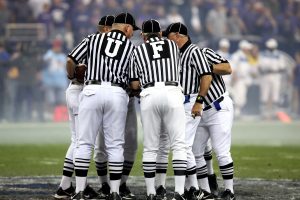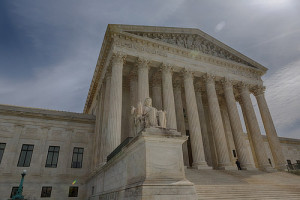Authors: Steven Cernak and Luis Blanquez
As we explained in a prior post, the new draft merger Guidelines issued recently by the FTC and DOJ cite to several older court opinions that may be unfamiliar to antitrust practitioners who have been focused for decades exclusively on earlier versions of the Guidelines. In the last post, we covered two such cases, Philadelphia National Bank and Pabst. Below, we cover three more of such newly “classic cases:” General Dynamics, Marine Bancorporation and Protect & Gamble.
General Dynamics
It is not surprising that the New Guidelines cite General Dynamics seven times; after all, the case has been cited in hundreds of opinions and even more law review articles and treatises. Nor are some of the citations surprising. For example, one citation (FN 93) quotes the case for the proposition that “other pertinent factors” besides market share might mandate a conclusion that competition would not be lessened by a merger. Similarly, citations about market definition make sense because the definitions of both the product and geographic markets were contentious points in the opinion. But for reasons we explain below, the citations to the case for parts of the New Guidelines that would challenge mergers on the basis of just an increase in concentration, while accurate, seem out of step with the opinion as a whole.
General Dynamics is a 1974 opinion with the 5-4 majority opinion written by Justice Stewart. Eight years before, Justice Stewart had written the dissent in Von’s Grocery. In that dissent, Justice Stewart penned one of his most famous quotes (no, not that one): “The sole consistency that I can find is that, in litigation under § 7, the Government always wins.” More substantively, Justice Stewart took issue with the majority’s market definition analysis. Instead of simply assuming a “Los Angeles grocery” market as the majority did, Justice Stewart would have applied a “housewife driving test” that, despite the antiquated name, was similar to the hypothetical monopolist test of later Guidelines. Also, instead of assuming anticompetitive effects from “high” market shares and increasing competition, as did the majority, Justice Stewart would have considered other pertinent factors, like low barriers to entry, turnover of firms, and changes to the Los Angeles population.
Eight years later, Justice Stewart applied similar concepts in General Dynamics, but this time for the majority. In this case, one Midwest coal supplier gradually purchased the voting securities of another Midwest coal producer. The DOJ produced evidence of high and increasing concentration in coal markets. Depending on the geographic market, the share represented by the top four firms went from 43-55% to 63-75% as the shares were being acquired. The lower court, however, found that there was cross-elasticity of demand among coal and other energy sources, like oil, natural gas, nuclear, and geothermal energy, so the proper product market was a broader “energy market.” Justice Stewart spoke approvingly of such a market analysis but, because of the analysis we describe below, found it unnecessary to opine on market definition. Significantly, the dissent agreed with the lower court that reviewing evidence of cross-elasticity of demand was appropriate; however, it thought that evidence supported a finding of a submarket for coal for certain customers, especially electric utilities. (The majority and dissent had similar disagreements about the geographic market definition.)
More important to the lower court and Justice Stewart were “other pertinent factors” that made shares of past production unhelpful in predicting future competitive effects of the merger. Here, the selling company’s reserves of coal were much smaller than its past or current production. For example, it controlled less than 1% of the coal reserves in Illinois, Indiana, and western Kentucky. As a result, its future competitive strength was much worse than a review of any current market shares would indicate. Again, the dissent did not dispute that such “other pertinent factors” were relevant to the analysis; however, it thought the facts did not support finding the seller to be so weak going forward and that much of that evidence came from post-acquisition transactions.
Given the overall facts and tone of both opinions in General Dynamics, it is odd that the New Guidelines cite it for support for challenging mergers that further a trend toward concentration. The New Guidelines accurately quote Justice Stewart’s opinion:
[The Court’s] approach to a determination of a “substantial” lessening of competition is to allow the Government to rest its case on a showing of even small increases of market share or market concentration in those industries or markets where concentration is already great or has been recently increasing…
But in the opinion, that sentence is followed by these three sentences:
…the question before us is whether the District Court was justified in finding that other pertinent factors affecting the coal industry and the business of the appellees mandated a conclusion that no substantial lessening of competition occurred or was threatened by the acquisition of United Electric. We are satisfied that the court’s ultimate finding was not in error. In Brown Shoe v. United States we cautioned that statistics concerning market share and concentration, while of great significance, were not conclusive indicators of anticompetitive effects … (cleaned up)
The New Guidelines citation to General Dynamics in its footnote 93 for the proposition that “other pertinent factors” besides concentration trends should be considered in merger analysis probably better reflects the overall tenor of the case’s opinions.
Marine Bancorporation
The Guidelines mention Marine Bancorporation seven times to highlight that when a merger eliminates a potential entrant into a concentrated market, it may substantially lessen competition or tend to create a monopoly. Marine Bancorp., 418 U.S. 602, 630 (1974).
The Guidelines explain that to determine whether one of the merging parties is a potential entrant, the Agencies examine:
- whether one or both of the merging firms had a reasonable probability of entering the relevant market other than through an anticompetitive merger. The Agencies’ starting point for assessment of a reasonable probability of entry is objective evidence. For instance whether the firm has sufficient size and resources to enter; evidence of any advantages that would make the firm well-situated to enter; evidence that the firm has successfully expanded into other markets in the past or already participates in adjacent or related markets; evidence that the firm has an incentive to enter; or evidence that industry participants recognize the company as a potential entrant Marine Bancorp., 418 U.S. 636–37 (1974); and,
- whether such entry offered “a substantial likelihood of ultimately producing deconcentration of [the] market or other significant procompetitive effects.” If the merging firm had a reasonable probability of entering the concentrated relevant market, the Agencies will usually presume that the resulting deconcentration and other benefits that would have resulted from its entry would be competitively significant, unless there is substantial direct evidence that the competitive effect would be de minimis.
This is known as actual potential competition. The Guidelines also describe that under perceived potential competition, the acquisition of a firm that is perceived by market participants as a potential entrant can substantially lessen competition by eliminating or relieving competitive pressure. And in FN 42 the draft includes that this elimination of present competitive pressure is sometimes known as an anticompetitive “edge effect” or a loss of “perceived potential competition.” E.g., Marine Bancorp., 418 U.S. at 639.
Procter & Gamble
The Guidelines mention Procter & Gamble six times to explain how the Agencies examine (i) whether one of the merging firms already has a dominant position that the merger may reinforce, and (ii) whether the merger may extend or entrench that dominant position to substantially lessen competition or tend to create a monopoly in another market.
The Guidelines highlight that to identify whether one of the merging firms already has a dominant position, the agencies look to whether (i) there is direct evidence that one or both merging firms has the power to raise price, reduce quality, or otherwise impose or obtain terms that they could not obtain but- for that dominance, or (ii) one of the merging firms possesses at least 30 percent market share. Procter & Gamble Co., 386 U.S. 568, 575 (1967).
If this inquiry reveals that at least one of the merging firms already has a dominant position, the Agencies then examine whether the merger would either entrench that position or extend it into additional markets. As a mechanism of whether a merger may entrench a dominant position, the Guidelines include, among others, entry barriers. A merger “may substantially reduce the competitive structure of the industry by raising entry barriers and by dissuading the smaller firms from aggressively competing.” Procter & Gamble Co., 386 U.S. 568, 578 (1967).
As in the case of General Dynamics, it is puzzling to see how the Guidelines cherry pick with the citations of Marine Bancorp and Protect & Gamble. Indeed, both cases discuss potential entry in concentrated markets and whether one of the merging firms already has a dominant position that the merger may extend to substantially lessen competition. But they also criticize––at length––the PNB 30% structural presumption and lack of economic analysis, something the Agencies completely ignore in this draft.
 The Antitrust Attorney Blog
The Antitrust Attorney Blog












